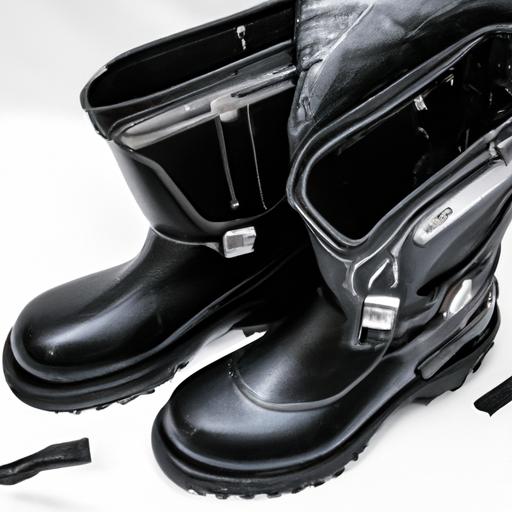Legal Requirements and Helmet Safety Standards
Wearing a helmet is not only a matter of personal safety and common sense but also a legal requirement in many countries. Understanding the legal requirements and helmet safety standards can further emphasize the significance of wearing helmets to save lives.
A. Overview of Helmet Safety Standards and Certifications
To ensure the effectiveness of helmets in protecting the head, various safety standards and certifications have been established. These standards evaluate the quality and performance of helmets, ensuring they meet specific criteria for impact resistance, coverage, and durability. Some well-known safety certifications include:
- DOT (Department of Transportation): The DOT certification is common in the United States and ensures that the helmet meets federal safety standards.
- ECE (Economic Commission for Europe): Widely recognized in Europe, the ECE certification ensures helmets comply with European safety standards.
- Snell Memorial Foundation: Snell certifications are voluntary and indicate that the helmet has undergone rigorous testing to meet high-performance standards.
By choosing a helmet that meets these safety standards, you can have peace of mind knowing that it has been thoroughly tested and approved for optimal protection.
B. Laws and Regulations Regarding Helmet Usage in Different Countries
To prioritize road safety, many countries have implemented laws mandating the use of helmets for different types of vehicles, such as motorcycles, bicycles, and scooters. These laws vary from country to country and even within different regions. It is essential to be aware of the specific regulations in your area to avoid penalties and ensure personal safety.
For instance, in countries like India, Vietnam, and Thailand, wearing helmets while riding motorcycles is legally required. Failure to comply with these laws can result in fines, license suspension, or even imprisonment. Understanding and adhering to these regulations can significantly reduce the risk of head injuries and save lives on the road.
C. Penalties for Not Wearing Helmets When Required
To enforce helmet usage, authorities have implemented penalties for those who fail to comply with helmet laws. These penalties aim to create a deterrent effect and emphasize the seriousness of ignoring safety measures. Depending on the jurisdiction, penalties for not wearing helmets can include fines, points on driving licenses, or even vehicle impoundment.
By highlighting the penalties associated with non-compliance, authorities hope to raise awareness about the importance of wearing helmets and encourage individuals to prioritize their safety on the road.
Remember, wearing a helmet not only protects your own life but also sets a positive example for others. Let’s explore the common myths surrounding helmet usage in the next section and debunk them together.
Debunking Myths Surrounding Helmet Usage
A. Addressing Common Misconceptions about Wearing Helmets
When it comes to wearing helmets, there are several common misconceptions that need to be addressed. One prevalent myth is that helmets restrict your vision and hearing, making it unsafe to wear them while riding. However, this couldn’t be further from the truth. Modern helmet designs are specifically engineered to provide maximum visibility without compromising safety. They are equipped with peripheral vision features and well-ventilated designs, ensuring an unobstructed view of the surroundings. Additionally, helmets do not impede your hearing to a dangerous extent. While they may slightly reduce external noise, the benefits of protecting your head outweigh any minimal impact on hearing.
B. Clarifying the Impact of Helmets on Hearing and Visibility
To put it into perspective, consider wearing a helmet as similar to driving a car with closed windows. You can still clearly see and hear what’s happening around you, but the wind noise and distant sounds might be slightly muffled. Furthermore, studies have shown that the use of helmets does not significantly impair a rider’s ability to detect important auditory cues, such as sirens or honking horns. In fact, helmets can even help reduce wind noise, allowing riders to focus better on the road.
C. Providing Evidence to Counter Arguments against Helmet Usage
Many arguments against wearing helmets stem from misconceptions and anecdotal evidence. However, numerous studies and real-life incidents provide substantial evidence to support the use of helmets. Research has consistently shown that wearing helmets significantly reduces the risk of head injuries and fatalities in accidents. In fact, a study conducted by the National Highway Traffic Safety Administration (NHTSA) found that helmets can reduce the risk of head injuries by up to 69%.
It’s important to rely on scientific evidence and expert opinions when evaluating the effectiveness of helmets. The misconceptions surrounding helmet usage should not deter us from prioritizing our safety on the road. Wearing a helmet is a simple yet effective measure that can potentially save lives.
The Role of Helmets in Preventing Head Injuries
A. Statistics on Head Injuries and Fatalities in Accidents
When it comes to road accidents, head injuries are often the most severe and life-threatening. According to recent statistics, a significant number of fatalities and severe injuries can be attributed to head trauma resulting from accidents. It is estimated that nearly 70% of motorcycle fatalities involve head injuries. These alarming figures underline the critical importance of wearing helmets to protect ourselves on the road.
B. Explanation of How Helmets Protect the Head
Helmets act as a crucial barrier between our heads and potential impact during accidents. They are specifically designed to absorb and distribute the force of a collision, minimizing the risk of severe head injuries. The outer shell of a helmet helps to prevent penetrating injuries, while the inner lining and padding absorb the impact and provide cushioning. This combination of structural integrity and shock absorption significantly reduces the chances of skull fractures, concussions, or brain trauma during an accident.
C. Importance of Choosing a Properly Fitting Helmet
Wearing a helmet alone is not enough; it is equally essential to ensure that it fits properly. A loose or ill-fitting helmet can compromise its effectiveness in protecting your head. When purchasing a helmet, take the time to measure your head circumference accurately and consult the manufacturer’s sizing chart. Remember, a snug and secure fit is crucial to ensure maximum protection. Additionally, be mindful of adjusting the chin strap properly to keep the helmet securely in place during any potential impact.
By understanding the role of helmets in preventing head injuries, we can appreciate the significance of this safety measure. So, let’s prioritize our safety on the road by wearing properly fitting helmets and reducing the risk of life-altering head injuries.
Conclusion
In conclusion, it is evident that wearing helmets is not just a fashion statement, but a crucial step towards ensuring our safety on the roads. By prioritizing helmet usage, we can significantly reduce the risk of severe head injuries and even save lives.
Throughout this article, we have explored the importance of wearing helmets for safety and the correlation between helmet usage and saving lives. We have discussed how helmets play a vital role in preventing head injuries by providing a protective barrier during accidents. Additionally, we emphasized the significance of choosing a properly fitting helmet to maximize its effectiveness.
It is essential to remember that wearing a helmet is not just a personal decision but a responsibility towards ourselves and our loved ones. By adhering to legal requirements and helmet safety standards, we can contribute towards creating a safer environment on the roads.
Promoting helmet use and raising awareness about its importance is crucial. Education campaigns and positive reinforcement can encourage individuals to make helmet usage a habit. By debunking common myths surrounding helmets and providing evidence of their efficacy, we can address any doubts or hesitations that may prevent people from wearing helmets.
In conclusion, I urge you to make a conscious decision to prioritize your safety and well-being by wearing a helmet whenever you ride a bicycle, motorcycle, or engage in any activity that puts your head at risk. Remember, wearing a helmet can be the difference between life and death. Let’s make a commitment to “wear helmet, save life” and ensure a safer future for ourselves and others on the road.



